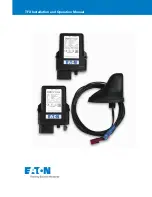
10
11
Grounding Block How-To:
Your existing outdoor antenna should already have a properly
installed grounding block in place, but if it must be moved
or is improperly grounded, please follow these important
instructions to ensure your antenna is safely grounded.
1. Connect a #8 aluminum or #10 grounding wire to a screw
terminal on the 75-ohm grounding block.
2. Connect the other end of the wire to an acceptable
building ground location. See examples below.
Examples of acceptable building grounding locations are:
• The building or structure grounding electrode system
as covered in 250.50 in the NEC
• Grounded interior metal water piping system within 5ft.
from its point of entrance to the building
• Grounded, non-flexible metallic power service raceway
• Service equipment enclosure, the grounding electrode
conductor or the grounding electrode conductor metal
enclosure of the power service
• An 8ft. grounding rod driven into the ground can be
used as long as it is connected to the central building
ground by a #6 or heavier bonding wire.
Refer to the NEC sections 250 and 810 for other acceptable
grounding methods.
Double-check all your connections after installation is
complete. Ensure there are good electrical connections of
your grounding wires and coax cables. See Fig. 1c for an
example of a properly grounded antenna installation.
provided
rubber boot, approximately 1/4in. in length (Fig.
1b).
b. Run the coax cable through the narrow end of the
rubber boot and attach the cable to the antenna.
c. Slide the rubber boot into the round channel on
the
antenna.
d. Wrap the zip tie around the slits in the narrow end of
the
rubber boot and pull it tight.
2. From the grounding block, connect the in-wall rated coax
cable that will run through the wall into your home to an
interior cable wallplate connection or, for whole-home
installation, a coaxial splitter in your attic. A separate
in-wall rated coax cable running to a separate cable
wallplate is required for each location served by the
splitter. The 75-ohm grounding block needs to be placed
as close as possible to the point where the second coax
cable enters your home.
NOTE: Be sure to leave enough slack in the coax cable to create a drip
loop so moisture cannot enter your house. You will also need to seal
the coax cable entry point into your house with an exterior caulk.
NOTE: Use of multiple splitters in a whole-home installation will
seriously degrade signal quality and is not recommended.
3. Connect your TV’s antenna port to the coax wallplate
using coaxial cable.
4. Follow your HDTV’s instruction manual to scan for
channels on your TV.
(Fig. 1b)


































